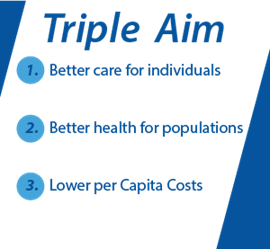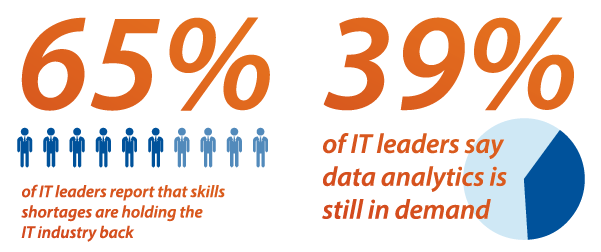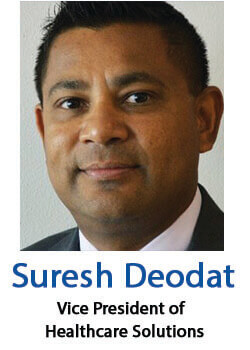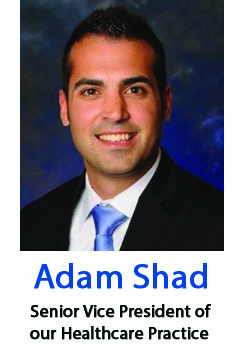
Industry Leaders Discuss the Value-Based Payment Trend in Health Care
There is a significant shift happening in the healthcare industry. Fee-for-service systems are phasing out, and value-based payment systems are moving in.
Now, more than ever, payers are asking providers to shift from volume-based care (fee-for-service) to a value-based (fee-for-value) structure.
There are several benefits of value-based reimbursements for the patient, the healthcare provider and the payer. While the system empowers providers to deliver a higher standard of care for patients at the lowest cost. However, the transition does not come without potential obstacles.
To understand the challenges that coincide with this shift to value-based payment, we sat down with Kforce healthcare thought leaders Adam Shad, Senior Vice President of our Healthcare Practice, Suresh Deodat, Vice President of Healthcare Solutions and Tom Finnerty, Director of Healthcare Solutions.
These industry experts shared their perspective on the growing healthcare trend and the impact it may have on talent attraction and recruiting.
 Do you feel the shift towards value-based payment plans will have a significant impact on the healthcare industry?
Do you feel the shift towards value-based payment plans will have a significant impact on the healthcare industry?
 “Yes, it will significantly impact the industry as a whole. The collaboration and communication amongst providers, patients, payers, the government, etc. will be paramount in order for this to work,” Shad explained. “The other day, I was speaking with one of our clients (who is a Payer), and they have had a major change in both mindset and operational procedures and how they work with providers, medical groups, etc. Their communication level and collaboration is far beyond what it used to be.”
“Yes, it will significantly impact the industry as a whole. The collaboration and communication amongst providers, patients, payers, the government, etc. will be paramount in order for this to work,” Shad explained. “The other day, I was speaking with one of our clients (who is a Payer), and they have had a major change in both mindset and operational procedures and how they work with providers, medical groups, etc. Their communication level and collaboration is far beyond what it used to be.”
Finnerty agreed. “There is still a lot of unknown. There are a lot of relationships that are being constructed and formalized right now, and with an election finally complete, we need to see where a new administration will make changes.”
According to Finnerty, this evolution is forcing collaboration to be financially viable, as well as striving to achieve the Triple Aim.
“The country has been evolving toward this for a long time,” said Deodat. “And, that evolution is being driven by the desire to stem the cost of rising healthcare. The larger value proposition is the desire to improve patient care and population outcome. If all of these parts do come together successfully, this will work.”
 What are some of the challenges associated with shifting toward value-based payment plans?
What are some of the challenges associated with shifting toward value-based payment plans?
Shad explained that historically, it’s been somewhat of a transactional environment.
“Now, there needs to be demonstrated proof of care in order for payment to happen,” Shad said. “Proof of value based care and better patient outcomes is not an easy thing to measure. Data and care coordination will become even more important as we make this shift. We’re seeing a growing presence of health plans creating medical groups and providers creating internal health plans.”
Deodat agreed. “There are still unknowns. While the intent of the regulation is generally understood, there have been continuous and shifting changes that have been a consternation across all stakeholder groups in healthcare. There are technical and workflow constraints, especially for smaller providers. They may not understand where they are in the continuum to meet compliance, not impact their patients or payments, or know what steps they need to take toward achieving value-based purchasing.”
“There are so many options based on where and who you are, coupled with significant options in affiliations and alliances,” Deodat continued. “It is critical that healthcare providers understand where they are in that continuum and how various stakeholders are impacted.”
 What are some of the steps that you feel the industry needs to take in order to truly support a value-based payment system?
What are some of the steps that you feel the industry needs to take in order to truly support a value-based payment system?
“For this to work, there needs to be a sound approach to care coordination – sometimes even externally across the healthcare system,” said Shad. “If this doesn’t work, value-based system may not work.”
Deodat agreed. “We are not there yet. We are still learning. We need the patient to participate in the care management process in order for this to work. This involves patient outreach and the patient side is just as important for this to work.”
 Are there any additional opportunities that a value-based payment model would offer healthcare professionals?
Are there any additional opportunities that a value-based payment model would offer healthcare professionals?
Finnerty explained that the model is opening up a lot more areas for provider positions.
“It’s no longer just the physician as the provider. They are collaborating with home health, medical systems, and other methods to provide care at a lower cost,” Finnerty said. “Individuals who are considering medical school will have many more options than what we’ve been seeing in traditional healthcare delivery.”
 How would a value-based payment model affect the professional service providers like Kforce?
How would a value-based payment model affect the professional service providers like Kforce?
“People, process and technology will be severely impacted from this shift in care,” Shad said. “We have already started to address some of these impacted areas with our customers to get ahead of what’s to come. The healthcare industry is evolving significantly, and Kforce is working diligently to evolve with it.”
Deodat explained how Kforce is doing this now. “We are at the forefront. We are continuously assessing the technology landscape in order to get ahead of the demand curve. The opportunity we have is to leverage our technology footprint and evolve together with our partners, focusing on data as a key component,” Deodat said. “It’s an evolving industry and as a Firm, we have invested heavily across several key components including dedicated healthcare SMEs at a national and regional level, dedicated healthcare delivery specialists in the healthcare and data space and a continuous investment in strategic vendor partnerships as well active contribution and participation in healthcare conferences and national/regional events.”

Multiple industries are competing for talent within the same data analytics talent pool.
“There are still some foundational challenges in the healthcare technology landscape driven by regulatory requirements and workflow challenges,” Deodat said. “I am not surprised that data is at the top of the list. Every industry needs the same thing when it comes to data. The healthcare industry is competing with the financial services, retail, entertainment, and consumer driven industries for seasoned professionals. The risk to healthcare is that other industries are not constrained by regulatory requirements.”
The shift toward value-based payment may be a bumpy road, and Kforce is here to help organizations through the transition. “We have the ability to bring our technical and operational expertise to help solve major technical and integration challenges,” Finnerty said. “Kforce is invested in thought leadership as well as providing talent.”
As a national provider of talent, Kforce helps customers evolving their technology landscape to drive the ultimate goal of improving patient outcome while reducing cost in a value-based world.



